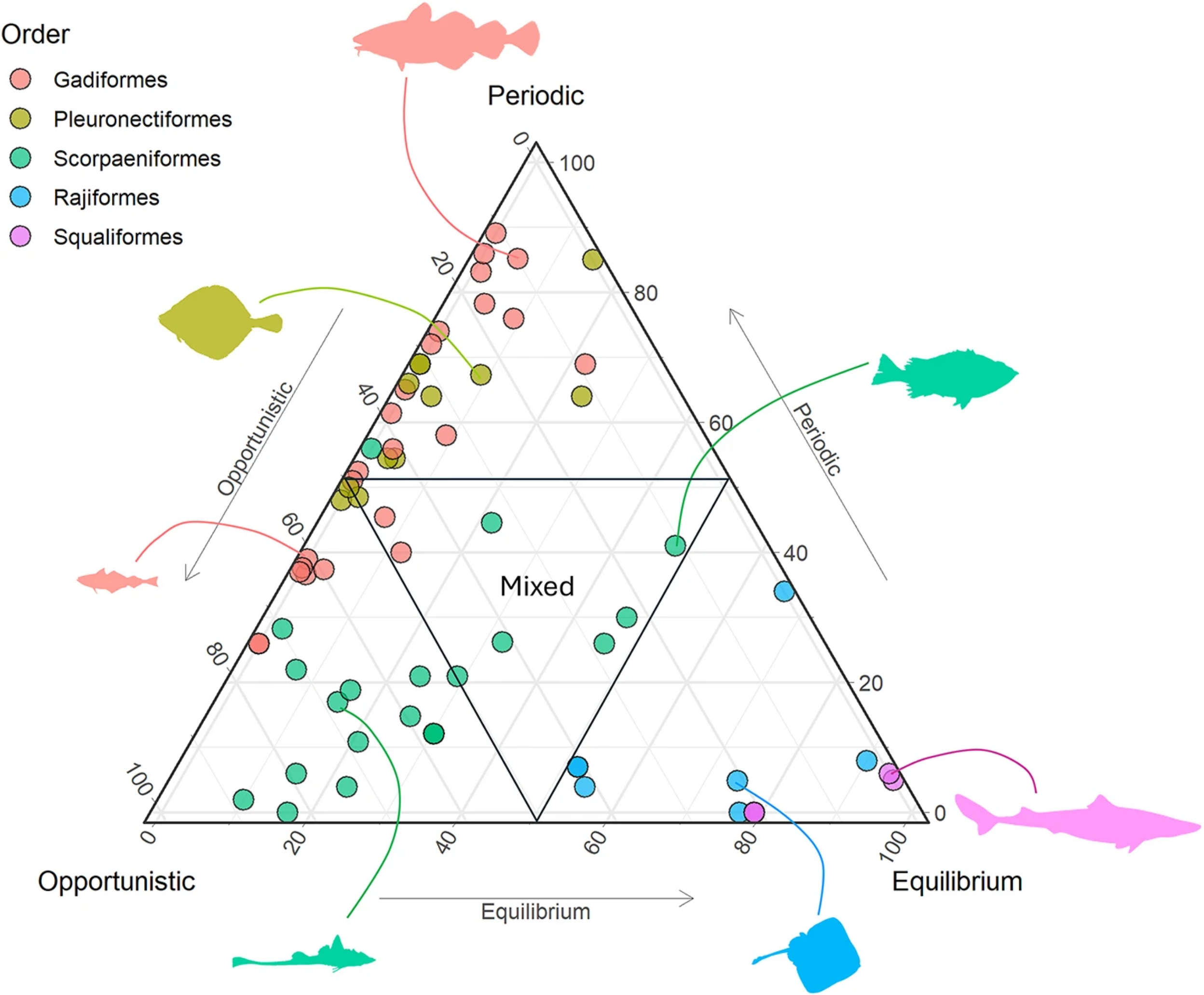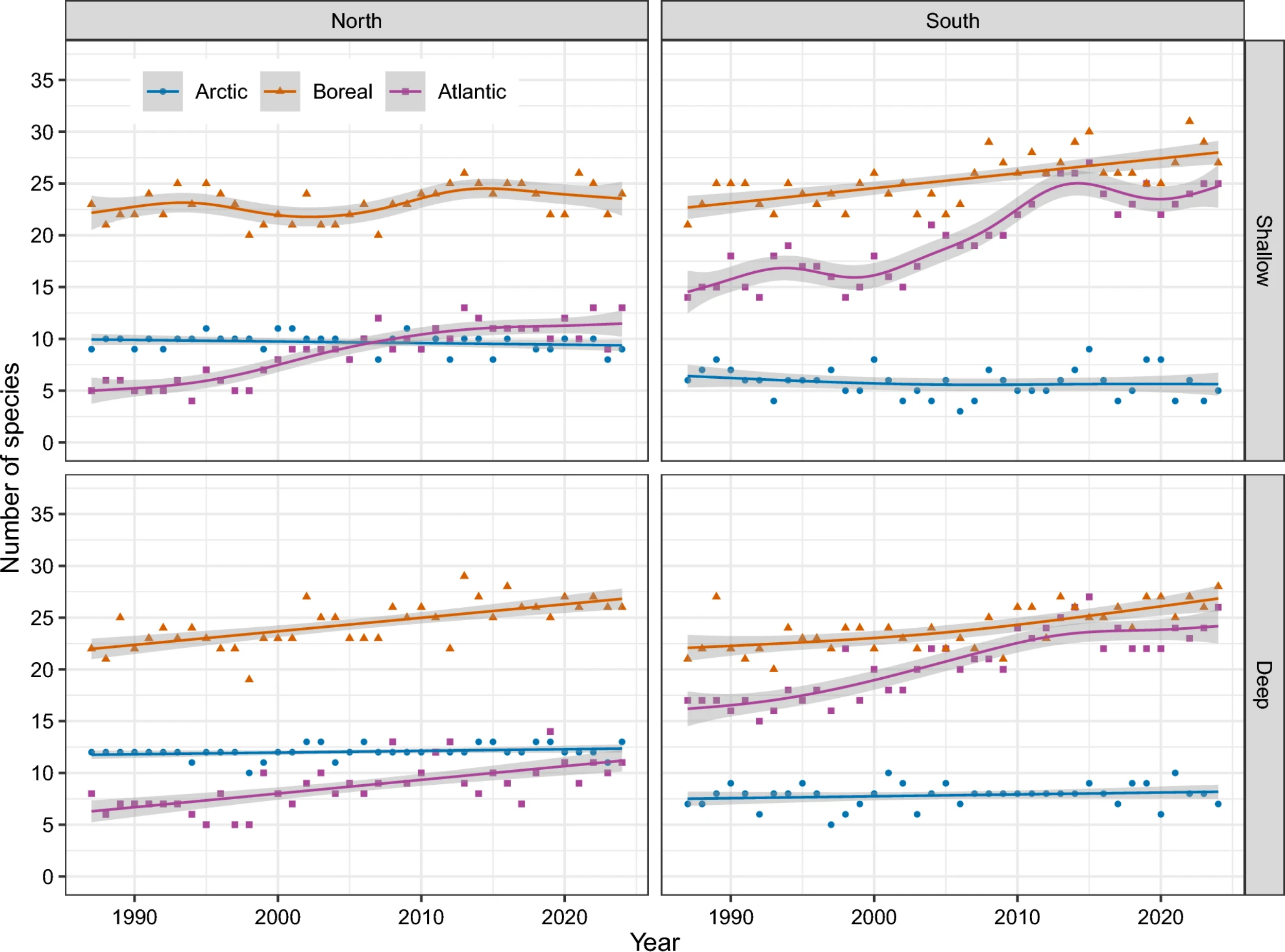New Publication – Groundfish Distribution in a Changing Ocean
We’re pleased to highlight a new publication co-authored by Jón Sólmundsson and Ingibjörg G. Jónsdóttir, both from the Marine and Freshwater Research Institute (MFRI) and members of the B-USEFUL project.
The article, published in Scientific Reports, is titled:
“How different life-history strategies respond to changing environments: a multi-decadal study of groundfish communities”
Drawing on nearly four decades of data from annual surveys conducted around Iceland since 1987, the study explores how groundfish communities on the Icelandic continental shelf have responded to long-term changes in ocean conditions.
Species were classified using two approaches:
Life-history strategies: Opportunistic, Periodic, and Equilibrium species
Biogeography: Arctic, Atlantic, or Boreal species

“Relative life-history strategy values derived from Pecuchet et al.6 and Bernardo et al.4 of selected species within five taxonomic orders (shown with different colours) plotted as trilateral continuum of traits based on Winemiller and Rose35. Taxonomic orders are represented by iconic demersal species on the Icelandic continental shelf: Atlantic cod and European plaice (periodic), Norway pout and Atlantic poacher (opportunistic), starry ray and spiny dogfish (equilibrium), and golden redfish (mixed). Triangles indicate grouping of species into four LHS groups. Angles of each axes values indicates what gridline to follow.
Key Findings:
Rising temperatures (1995–2005) led to an increase in Atlantic opportunistic species and a northward shift in their distribution.
Arctic species declined in parallel, while Boreal species showed moderate changes but benefited from warming.
Species richness increased, especially in warmer southern and western waters of Iceland.
The observed changes echo historical patterns seen between 1925–1945.

“Temporal changes in species richness of different biogeographic groups by subareas and depth zones. Smoothed lines are based on gam smoothing.”